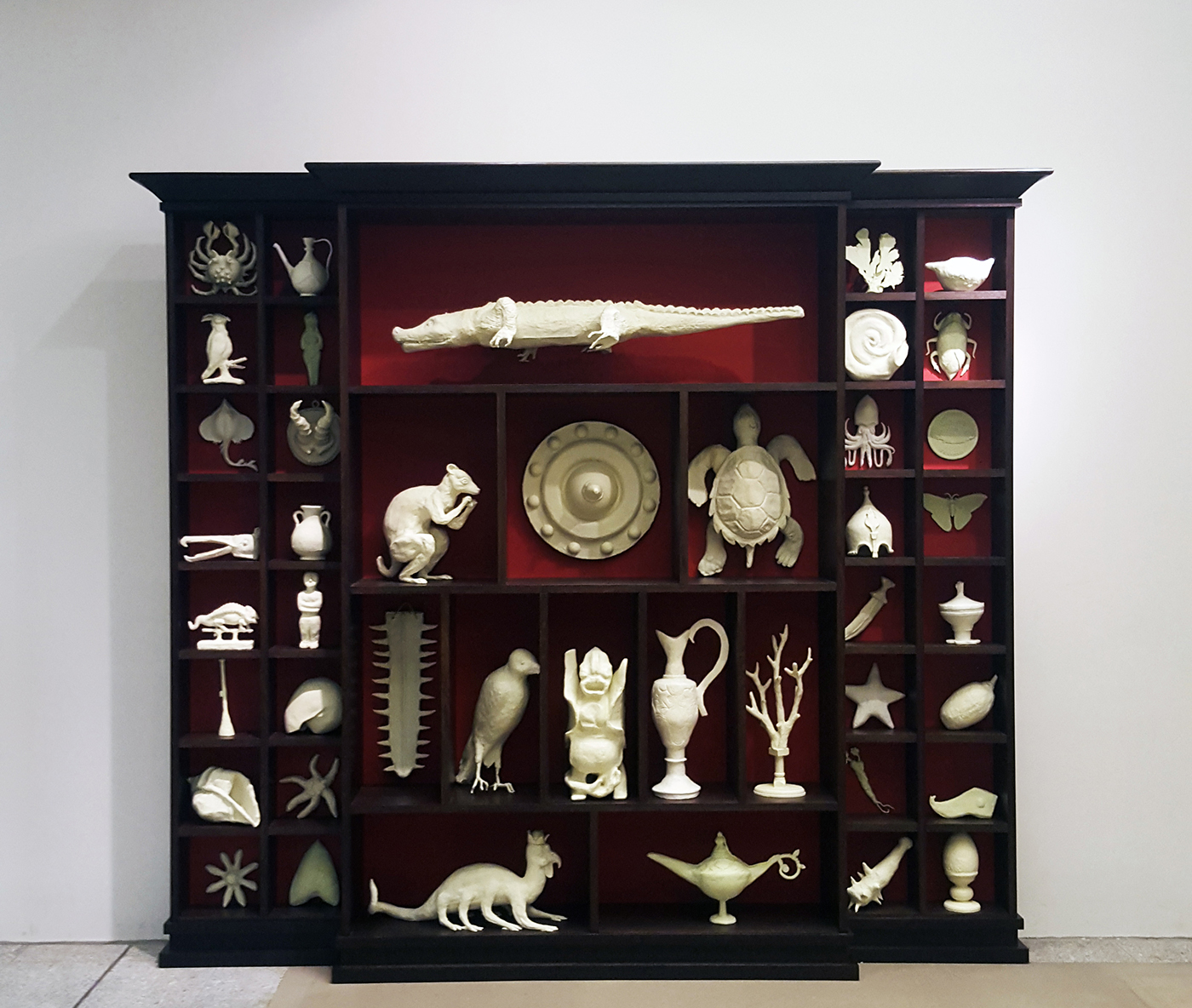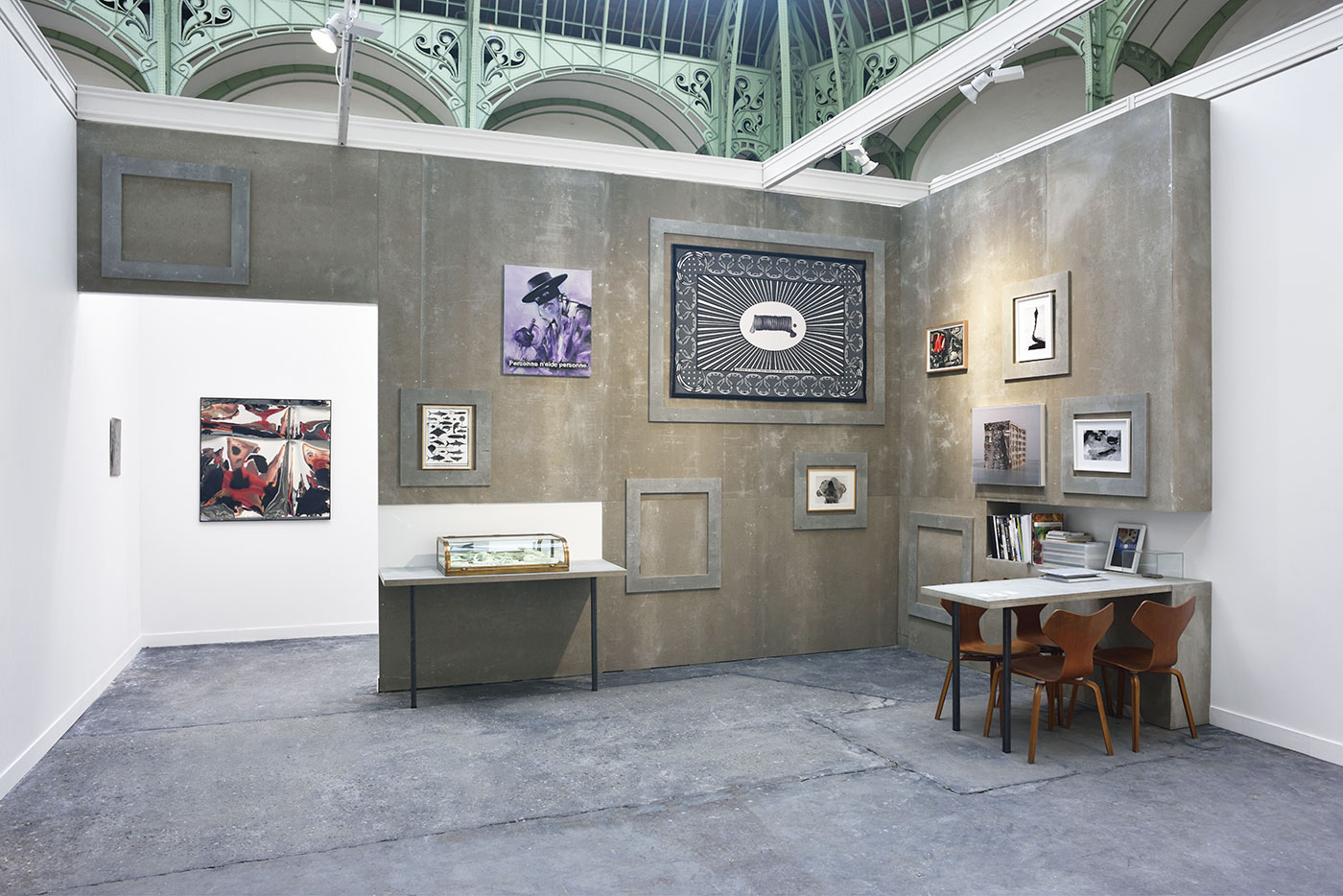Dion

Mark Dion
The Unruly Collection, 2015
Wooden cabinet, luminescent paint and 43 papier mâché sculptures
220 x 250 x 30 cm
Unique artwork
© Sebastiano Pellion
Courtesy de l'artiste & Galerie In Situ - fabienne leclerc, Grand Paris
Collection publique, France
For his work "The Unruly Collection", Mark Dion continues his investigation into the traditions of the Cabinet of Curiosity, Wunderkamer, and Kunst Kammer. For his extensive research on the topic he has gleaned images from engravings of the 15th and 16th century collections. Natural rarities, art objects and enthographic wonders found in engravings as widespread as Naples and Copenhagen were isolated and send to his team of five sculptors to remake. The artists worked with Dion to best represent the images, returning them to the world of three dimensions. Thus he builds another link in a chain of relationships which started hundreds of years ago with animals, plants and artifacts, collected far from Europe. They were then collected by a traveler, sold to a curiosity deal and the resold to a collector. This collector then exhibited the specimens in a cosmological display, where they were drawn by an artist. This drawing was later turned into an engraving, set in a book and distributed around the world. Hundreds of years later Dion picks up this severed chain and forges a new link in the history of relations. The objects Dion assembles are indeed unruly, for they were separated by continents and decades and could have never existed side by side and a manner that Dion has arranged them. To reinforce the uncanny nature of the project Dion has employed luminescent paint, which has a memory of light and glows. In a sense it is a way of acknowledgement of ghost like status of the sculptures themselves.
For his work "The Unruly Collection", Mark Dion continues his investigation into the traditions of the Cabinet of Curiosity, Wunderkamer, and Kunst Kammer. For his extensive research on the topic, he has gleaned images from engravings of the 15th and 16th century collections. Natural rarities, art objects and enthographic wonders found in engravings as widespread as Naples and Copenhagen were isolated and send to his team of five sculptors to remake. The artists worked with Mark Dion to best represent the images, returning them to the world of three dimensions. Thus he builds another link in a chain of relationships which started hundreds of years ago with animals, plants and artifacts, collected far from Europe.
They were then collected by a traveler, sold to a curiosity deal and the resold to a collector. This collector then exhibited the specimens in a cosmological display, where they were drawn by an artist. This drawing was later turned into an engraving, set in a book and distributed around the world. Hundreds of years later Dion picks up this severed chain and forges a new link in the history of relations. The objects Dion assembles are indeed unruly, for they were separated by continents and decades and could have never existed side by side and a manner that Dion has arranged them. To reinforce the uncanny nature of the project Dion has employed luminescent paint, which has a memory of light and glows. In a sense it is a way of acknowledgement of ghost like status of the sculptures themselves.

